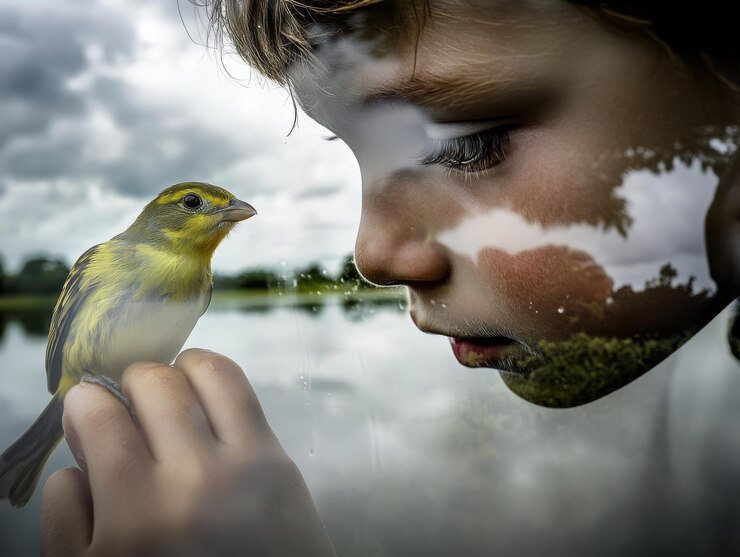Bird that’s getting wise to the world, with their colorful feathers, melodious songs, and ability to soar through the sky. But beyond their beauty and flight, birds are also incredibly intelligent animals. In fact, many species of birds have been found to possess complex problem-solving skills, advanced communication abilities, and even the capacity to use tools. This growing understanding of bird intelligence has led to the phrase, “bird that’s getting wise to the world,” which refers to birds becoming more aware of their surroundings and adapting to the modern world in remarkable ways.
Bird intelligence is not just about mimicking human speech, as we often see with parrots. It goes much deeper, with some birds demonstrating an ability to understand cause and effect, remember locations over long periods, and even cooperate with other species for mutual benefit. Researchers continue to uncover new aspects of bird cognition, showing that birds are not just reacting to their environment but actively learning and making decisions based on their experiences.
Bird that’s getting wise to the world Intelligence: More Than Just Instinct
For many years, people believed that birds operated purely on instinct, with their actions being hardwired into their biology. However, recent studies have shown that birds are much more intelligent than previously thought. Certain species, like crows, ravens, and parrots, exhibit behaviors that suggest they are capable of reasoning, planning, and even solving puzzles that challenge their mental abilities.
For example, the New Caledonian crow is known for its ability to use tools to obtain food. These birds have been observed crafting sticks into hooks to extract insects from tree bark, a behavior that requires an understanding of how objects work together. This level of problem-solving demonstrates that birds can think ahead and manipulate their environment to achieve a goal—something that was once considered unique to humans and primates.
Another example of bird intelligence is seen in the African grey parrot, which can learn to associate words with meanings and use them in context. Famous African grey parrots like Alex have shown an ability to count, recognize shapes and colors, and even express desires or emotions. This level of cognitive ability in a bird demonstrates that they are capable of much more than simple mimicry—they are actively processing information and applying it in various situations.
Birds Adapting to the Modern World
As the world changes, so do the challenges that birds face. Urbanization, climate change, and habitat destruction have forced many bird species to adapt to new environments. In cities, some birds have learned to navigate human-created obstacles, such as traffic or high-rise buildings. Pigeons, for instance, have become masters at finding food in urban areas, learning to recognize people who regularly feed them or identifying places where food is frequently discarded.
Similarly, some species of birds have learned to time their migration patterns to coincide with changing weather patterns or the availability of food. This shows that birds are not only capable of learning from their environment but also adapting their behavior based on changing conditions. This ability to adapt is crucial for their survival in a rapidly changing world.
One striking example of birds adapting to the modern world is seen in the behavior of some urban crows. In cities, crows have been observed using cars to crack open nuts. They will place the nuts on the road and wait for a car to run them over, effectively using the vehicle as a tool. Once the shell is cracked, the crows safely retrieve the nut. This clever strategy shows how birds are not only learning about the world but also finding innovative ways to solve problems using the resources available to them.
The Role of Memory in bird that’s getting wise to the world Behavior

Birds also have an impressive memory, which plays a critical role in their ability to adapt and survive. For example, migratory birds can remember the routes they take across continents, often returning to the same nesting grounds year after year. This is no small feat, considering the vast distances some birds travel, often covering thousands of miles across unfamiliar terrain.
Birds like chickadees and nuthatches are known for their ability to store food in various locations during the autumn months and then retrieve it during the winter. These birds can remember the exact spots where they hid seeds, even weeks or months later. Such behavior requires an exceptional memory, which is another indication of their high level of intelligence.
In addition to spatial memory, some birds also exhibit social memory. They can recognize individual birds they have interacted with in the past, whether they are friends or foes. This ability to remember and respond to specific individuals helps birds navigate their social structures, avoid conflicts, and build alliances.
Conclusion
Birds are much more intelligent than many people give them credit for. Their ability to solve problems, use tools, communicate effectively, and adapt to their changing environments highlights their cognitive abilities. As we continue to study bird behavior, we are discovering that they are not only creatures of instinct but also capable of learning and adapting in ways that were once thought to be the domain of humans and other highly intelligent animals.
The phrase “bird that’s getting wise to the world” captures this evolving understanding of bird intelligence. Birds are not only surviving but thriving in a world that presents new challenges and opportunities. Whether it’s a crow using a car to crack open a nut or a parrot learning to communicate with humans, birds are showing that they are more aware, capable, and adaptable than we ever imagined.
The more we learn about bird intelligence, the more we realize that these creatures are far more complex than they appear. From their impressive memories to their ability to adapt to urban environments, birds are truly getting wise to the world, proving that they are more than just instinct-driven animals. They are intelligent beings capable of learning, adapting, and thriving in a rapidly changing world.
FAQs
Q: Are birds really intelligent?
A: Yes, many birds, especially crows, ravens, and parrots, show high levels of intelligence, such as problem-solving, tool use, and communication skills.
Q: How do birds use tools?
A: Some birds, like crows, use sticks or other objects to extract food from hard-to-reach places, demonstrating an understanding of how tools work.
Q: Can birds remember things over long periods?
A: Yes, birds like migratory species or those that store food can remember locations and routes for weeks, months, or even years.
Q: Do birds adapt to urban environments?
A: Many birds, such as pigeons and crows, have adapted well to cities, learning to find food, avoid dangers, and even use human inventions to their advantage.
Q: Can birds communicate with humans?
A: Some birds, particularly parrots, can learn to mimic human speech and even understand the meaning of certain words, allowing for basic communication.


